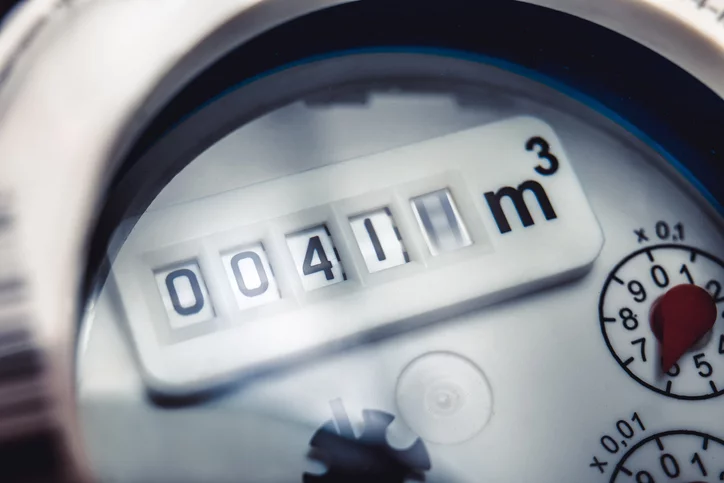Wessex Water consultation on its draft Water Resource Management Plan 2024
Wessex Water consultation on its draft Water Resource Management Plan 2024
Our response: a summary of our key issues/concerns
The WRMP sets out how Wessex will ensure customers remain in supply by 2050 and beyond and includes a non-technical summary of the plan for the wider customer base. In the interests of customers, any options within the WRMP should be supported by evidence that they are the most cost effective options available before they are approved by regulators.
We are of the view that the WRMP should include more information on the following elements of the plan:
- How customer views have influenced plans to reduce leakage at a slower rate than would be required to meet the 50% leakage reduction target;
- The PCC target that the company will be working towards in place of the 110 l/p/day target;
- What new programmes are being introduced to manage water demand;
- The implications of not meeting the 50% leakage reduction target and the 110 l/p/day PCC target; and
- How the company intends to work with non-household customers to reduce their demands for water, particularly through smart metering.
In addition, we feel that more could be done within the WRMP, particularly within the non-technical summary, to communicate the plan to customers by explaining:
- Why the options proposed in the plan are being taken (or not taken in the case of leakage and PCC targets);
- How their views contributed to the formation of the plan; and
- What the options considered, and the plan as a whole, mean for customers. For example, by including information on bill impact and forecast meter coverage %.
These issues have been addressed in more detail below within our responses to the questions asked as part of the consultation.
Response to specific questions
We are pleased to see the plan taking steps to achieve the three objectives listed above, particularly to ensure customer priorities on environmental protection and affordability are being addressed whilst ensuring customers will remain in supply by 2050 and beyond.
As detailed further below, the plan does not seem to have taken the government target for Per Capita Consumption (PCC) and the industry commitment on leakage reduction as a required aim for this plan in the same way as the move to deliver resilience for customers to a “1 in 500” magnitude severe drought.
Meeting targets around non-household water use, PCC and leakage which have since been set out in the Government’s Environmental Improvement Plan (EIP) should be part of the focus to reduce demand in order to deliver the resilience required to ensure customers remain in supply. We would be keen to know if discussions have been held with the relevant bodies on Wessex’s decision not to include meeting these targets as main priorities to be achieved through the plan and what the conclusions of these discussions were. We also
think that it should be made clear in the non-technical document if and why the company doesn’t plan to meet these targets.
Whilst we appreciate that Wessex assert that there are more cost-effective approaches than a fast leakage reduction strategy to achieve drought resilience, protect local chalk streams and achieve their other environmental objectives, we are concerned that the draft plan appears ambivalent on achieving the 50% leakage reduction target that the industry has committed to and that has been set out in the EIP.
In addition, the customer research set out in pages 51 and 52 of the Supply-Demand Balance, Decision-Making and Uncertainty document found that although views on leakage were mixed and complex, 76% of respondents agreed that the ‘level of leaks and loss of water from the water supply network should be minimised as far as possible regardless of the cost’. The main technical plan (page 63) acknowledges that reducing leakage is a customer priority but states that the outcome most important to customers is sustainable abstraction – they are less concerned how this is achieved. The customer research findings on pages 51 and 52 do not seem to caveat concerns with leakage by stating that this is seen primarily a solution to more sustainable abstraction. The leakage reduction of 17% since 2017 achieved by Wessex is commendable, but the initial approach set out in the draft plan
to only achieve a 20% reduction in leakage compared to the target of 50% seems at odds with these findings.
CCW’s recent research on the awareness and understanding of water issues amongst water customers found leakage frustrates consumers and undermines any calls to action from water companies to play their part by reducing water use and observing hosepipe bans. This highlights the importance of taking action to address leakage and being transparent
with customers on leakage.
We would like to see more evidence that Wessex Water customers are content with the company only seeking to maintain leakage reductions achieved to date in the short term and delaying any decision to take action required to meet the longer term leakage target until a later date if it is deemed absolutely necessary to maintain the supply demand balance.
More information should be provided in the public facing non-technical summary to explain to customers why Wessex are taking the decisions on leakage set out in the plan and how this correlates to what they have told the company.
We would also like to know what consequences Wessex expects to face should it decide not to aim for, or fail to achieve, the 50% industry leakage target.
Yes, we are pleased to see strategic options being developed in conjunction with
neighbouring companies in the West Country and encourage further joint working with companies in that area and further afield to contribute to maintaining water resources regionally and nationally. We acknowledge the difficulties faced by Wessex in drawing up this plan in the absence of a draft regional plan.
We are concerned that the plan does not appear to be aiming to meet the 110 litres per person per day consumption target by 2050 as set by government and detailed in the EIP. Can you please set out what PCC you are aiming to achieve by 2050 under the plan?
We would also like to know what consequences Wessex expects to face should it decide not to aim for, or fail to achieve, the 110l/p/d PCC target.
The demand management strategy includes promotion of the government water efficiency labelling scheme and an extended metering programme, but other than that it doesn’t appear that any new programmes are being proposed. Will this be sufficient to drive down demand significantly considering recent PCC trends? Or are new, innovative ideas required?
We are pleased to see that the compulsory metering approach (due to being classified as a water stressed area by the Environment Agency) included in the plan, is backed up by research showing most customers believe it is the fairest way forward.
The approach to balance customer concern about smart metering with the potential benefits from them by piloting smart meters in two environmentally sensitive areas for both household and non-household consumers, before using evidence from these pilots to inform customers and make decisions on how to roll this programme out further is a sensible one.
It is disappointing that the draft WRMP lacks ambition on how the company should work with business customers and retailers in the short and long term to reduce demand and increase water efficiency. The non-household retail market has so far failed to deliver a market for water efficiency assistance for business customers in England to the extent that was envisioned when the non-household retail market was created.
While the introduction of a new business demand Performance Commitment by Ofwat in the PR24 final methodology means there will be greater transparency and an opportunity to set challenging targets, this is not a regulatory measure that can deliver demand reduction by itself. Wholesale companies’ plans need to be clearer on how they will manage business
demand, especially in areas more at risk of water scarcity.
We would like to see greater innovation and ambition in demand management, with wholesale companies showing how they will engage with customers and retailers on joined up strategies to help reduce demand in line with 15% reduction by 2050 set out in the EIP.
In particular, smart metering is something that we would expect to see prioritised for customers with high water dependency. We are aware from conversations during the Wessex WRMP webinar session that the majority of non-household customers are already metered and that these customers will be included in the smart metering pilots detailed in the draft WRMP, but we advise that this, and any other information specifically regarding non-household demand management, is clarified in the plan and non-technical summary. We are looking to water companies to have a clear plan for smart metering for business customers in their PR24 business plans (and WRMPs), and accelerate those plans where possible. We expect this will include a targeted approach, prioritising the following areas from 2025:
- Meters left unread for twelve months or longer.
- Customers located in water stressed areas.
- High water users.
- Wholesalers to commit to work with retailers to implement water efficiency services/water audits in their business plans (and WRMPs)
The non-technical summary document should be accessible and informative to the public and although it is a helpful document for setting the scene of the Water Resource Management Plan, we feel it could be improved in this regard. The document is very text heavy and would benefit from the use of visuals and infographics to help convey the messages within all sections of the document. For example, showing what proportion of the predicted supply-demand deficit will be caused by licence reductions, climate change, population growth etc. It is also light on detail of what the plan will substantively contain. This content takes up only 1 page of the document. More detail on the options that Wessex are taking, when they will be taken and what the impact will look like for customers would be beneficial. For example, it could provide information on what % of homes will have a meter installed by 2030 or 2040 and what impact you expect this option to have on water demand and the supply-demand balance.
There is evidence within the technical documents of customer engagement and explanation of how the findings from this engagement influenced the formation of the plan. We feel that including a simplified version of this within the non-technical summary would help customers understand how what they have told the company has fed into the selection of the options included in the plan.
It is also unfortunate that any costs have been excluded from the non-technical document. It would be helpful for customers looking at this document to know what the bill impact of the options chosen within this plan will be.
Finally, for those readers who choose to take a deeper look into the plan, it may helpful to include footnotes or references within the non-technical summary highlighting where in the technical documents they can find the underlying information.



